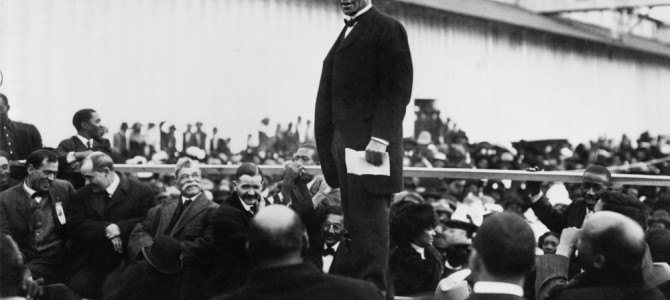
“Intersectionality”—or discussing feminism always within the context of fighting racism and class inequality—is a sacred goal championed by feminists like Eleanor Robertson of the Guardian. She describes it as “one of the most important ideas that feminist scholarship has ever come up with.”
Maybe intersectionality would be possible if only the gender part of this equation did not fall under the umbrella of the sexual revolution. Second-wave feminism, punctuated by the early 1960s publications of Helen Gurley Brown’s “Sex and the Single Girl” and Betty Friedan’s “Feminine Mystique,” became something of a traffic accident.
Timing is everything. The shift to a new conception of women’s rights came shortly after rebellious white men had declared war on chastity and marriage. The early 1950s saw the launch of Hugh Hefner’s Playboy and the debut of Arthur Miller’s “Crucible,” while the late 1950s saw the publication of Norman Mailer’s seminal essay, “The White Negro.” Pornography went pop. Naked bodies became something male consumers were entitled to see for a price. The more pastors and church ladies inveighed against dirty magazines, the more boys came to see consuming porn as an act of political liberation rather than as the ancient, embarrassing habit of onanism. Marilyn Monroe was a key link between this major cultural shift and “The Crucible,” since she posed for Playboy and soon married Arthur Miller.
How Sexual Promiscuity Became Cool
Miller’s “Crucible” used the Salem witch trials as an obvious allegory for the repressions of creative people by Wisconsin Rep. Joseph McCarthy and the House Un-American Activities Committee. Miller’s play reinforced the association in Americans’ minds between sexually judgmental Puritans and their penchant for political persecution. Puritan Hester Prynne of Nathaniel Hawthorne’s “Scarlet Letter” was a returning specter in the American conscience, a symbol of sexual heroism, the martyr whose defiance of oppression consisted of eroticism forbidden by snoopy matrons and emasculated hypocrites.
These strong messages converged in Norman Mailer’s chronicling of the hipster movement. While maintaining some ironic distance from the hipsters in “The White Negro,” Mailer furthers the period’s habit of framing radicalism sexually. Mailer implies that white male sexual transgression could be a revolutionary act against political repression, equivalent to black families facing fire hoses and bulldogs to enroll in white schools. Here is an excerpt from “The White Negro”:
Knowing in the cells of his existence that life was war, nothing but war, the Negro (all exceptions admitted) could rarely afford the sophisticated inhibitions of civilization, and so … he lived in the enormous present, he subsisted for his Saturday night kicks, relinquishing the pleasures of the mind for the more obligatory pleasures of the body, and in his music he gave voice to the character and quality of his existence, to his rage and the infinite variations of joy, lust, languor, growl, cramp, pinch, scream and despair of his orgasm. For jazz is orgasm, it is the music of orgasm, good orgasm and bad, and so it spoke across a nation…
Mailer celebrates the freeing effect of “orgasm” embodied in “jazz,” a black art form outside the “sophisticated inhibitions of civilization.” Yet the black civil rights movement of the 1950s was led by orderly Christian family men who wanted desegregated schools for their children, voting rights, and relief from police harassment. The fight against racism was not waged by promiscuous men ejaculating while listening to jazz.
Once, Women Deserved Honor
Civil rights as we have come to romanticize them are really more a creature of the conformist 1950s than a spawn of the chaotic 1960s. In 1954, the Supreme Court handed down Brown v. Board of Education; ten years later, Congress passed the 1964 Civil Rights Act. This mere decade saw the quantum leaps in anti-discrimination law commonly associated with civil-rights nostalgia, as well as the most heroic efforts to remedy centuries of ghastly racism.
It all begin with Brown. The Supreme Court received expert testimony from researchers Kenneth and Mamie Clark, who had observed that black children were more likely to play with white dolls than with black ones, because they thought the white dolls were prettier.
“What does the doll experiment in Brown tell us about the long-dead culture of the 1950s?” I asked my students, as we were discussing Brown in relation to the film “Show Boat” (1951), starring Ava Gardner and Howard Keel. The 1950s were simultaneously very racist and yet a time when a more conservative Hollywood had forged a powerful national consensus about marriage and family values. “Show Boat” could successfully appeal to American audiences with its tragic plot of racism, because the mulatta character Julie LaVerne (Ava Gardner) sings, “Fish gotta swim, birds gotta fly, I gotta love one man ‘til I die.” The moviegoers of 1951 had a widely understood cultural code that read Julie’s song as an ode to chastity, something everybody could embrace.
The decision in Brown v. Board of Education makes sense when we acknowledge the era’s traditional values about family, women, and children. In the early 1950s audiences worshipped women as icons of beauty and honor. The thought that little girls, the pinnacle of beautiful innocence, would be denied the dignity of envisioning dolls like themselves as lovely, prompted a country to mobilize and desegregate. There has been no comparable breakthrough since the decade after Brown.
A Chastity Culture Leads to Widely Dispersed Wealth
Racial stalemate stems partially from distorted memories of what catalyzed revolutionary change. Refashioning the 1950s through the fantastical lens of the 1960s, many in the New Left hallucinated that white men seeking to satisfy sexual urges without guilt were like black people resisting the Ku Klux Klan and state-imposed repression in the Deep South. Promiscuity and sleaziness were seen as allies of black liberation rather than as social traps.
Kevin Phillips’ 2002 book “Wealth and Democracy” graphs what happened to wealth inequality starting in the 1970s. For several decades, under both Republican and Democrat administrations, poverty had been high but income inequality had been low. Between the 1970s and 1990s these trends reversed. Official poverty rates dropped but the statistical gap between the wealth of the uppermost American elites and the middle class ballooned to the frightening scale of the Gilded Age. Racial inequality reflected this trend. By the 1990s, median household wealth for whites was $18,100, contrasted against $200 for black families and $0 for Latino families.
Marxists contend that this slide could be traced to expansion of multinational corporations and globalized “late capitalism.” Equally valid but often ignored is the objection by social conservatives: The Eisenhower years saw a powerful chastity culture, which resulted in stable households. This enabled families to amass private equity in homes, savings, and automobiles.
Although the children of these 1950s parents ended up reveling in no-fault divorce and rampant promiscuity, the nest eggs trickled down as family inheritances. White families by and large enjoyed the lasting benefits of 1950s chastity culture, whereas most of today’s Latino families did not have ancestors in the country by the 1950s; their parents or grandparents immigrated to an America that was already sexually decadent and plagued by divorce.
Black families of the era were prevented from reaping the benefits of Christian chastity because of institutionalized racism. The civil rights movement shattered the apparatus of Jim Crow, but the sexual revolution shattered the stable culture that would have allowed them to build what white families built during the Eisenhower era.
Where Christians and Feminists Should Agree
Feminism also suffered from its incongruous ties to the male revolt against chastity. The sexual revolution predated second-wave feminism and framed women’s rights in terms of birth control, fornication, pornography, abortion, and no-fault divorce: all things that left them increasingly available, vulnerable, and disposable, to men.
So where does this leave us now?
Symptomatic of our current state is the stunningly sexist war of wards between Donald J. Trump and Ted Cruz over their wives’ looks, sexual desirability, and propriety. Bryan Fischer, blogging at the website of the American Family Association, writes that Trump is “Beneath Contempt” because of his comments regarding women. His column begins: “This column is not about politics. It is about basic human decency, civility, and respect for women” (emphasis added).
Matt Walsh wrote this in The Blaze at virtually the same time:
For the record, Donald Trump’s current wife — a woman 25 years his junior who used to take her clothes off and pose for pictures for money — is his third, who he married after dumping his second, Marla, with whom he cheated on his first, Ivana, who, according to allegations in a sworn deposition, he once brutally assaulted.
By the way, he has never repented, apologized, or admitted that he did anything wrong … He boasts of his adultery, happily recommends that other husbands leave their wives just as he did, encourages men to look at women as ‘pieces of ass,’ and advises them to ‘treat women like sh*t.’
While Fischer and Walsh were writing these “J’Accuse!” statements regarding Trump’s putative misogyny, countless feminists were decrying Trump as a misogynist for his vulgar tone toward Rosie O’Donnell, Megyn Kelly, and a woman who wanted to pump breast milk during a deposition.
In Trump’s views toward women there seem many things to hate, yet none of the complaints against him seem to stick, because the two groups taking most strenuous objection—Christian conservative men and feminists—have been at each other’s throats ever since the sexual revolution started and will never articulate a compelling argument to the public explaining what is so wrong with Trump’s conduct.
Both right and left complaints about Trump are often marred by special pleading and overuse of outdated anecdotal evidence against him. The allegations about Ivana Trump date back to almost 30 years ago. Claims about Trump’s treatment of journalist Selina Scott go back 20 years. The other hyperlinks Walsh provides lead to statements Trump published in 1997 or made in interviews going back to 2003.
As I argued recently in American Thinker, Christians cannot impute permanent, irreversible guilt to someone going back that far without undermining the entire premise of Christianity itself: repentance and changing for a better purpose.
Trump Treats Women As Feminists Demand
Second-wave feminism created Trump. Feeding on the scraps of Hefner’s and Mailer’s sleazy sex liberation, second-wave feminism misconstrued women’s plight as the consequences of chastity and patriarchy, which were actually cultural ideals that limited male behavior and forced men to sublimate their libido into chivalry and other respectful gestures toward women.
The anti-rape “yes means yes” consent laws governing college campuses are clumsily trying to replace the consent-focused purpose of marriage—“Do you take this man…”—without admitting that marriage was actually good for women. In a Buzzfeed video featuring feminists challenging male chauvinism, some of the feminist challenges are:
Why do you think we’re obsessed with you when we hook up?
[When we hook up], I just want you to leave too, I’m busy, I got s*** to do.
Why can’t I sleep with as many people as I want to, without being judged?
This landscape of transient female lust is only possible if there are men left in the wake of all these callous one-time encounters. Fifty years of life after “Sex and the Single Girl” lead to … Donald J. Trump. Told by feminists that he is damned for wanting a traditional commitment, and told by Christian conservatives that he is damned for giving women what feminists said they wanted, Trump plays to the middle ground, where misogyny blossoms. He is not an isolated phenomenon.
There’s much to criticize about divorce. But one divorce is necessary: It is time for “civil rights” and the “sexual revolution” (including feminism) to part ways. There is no intersectionality here, just poisonous cross-purposes. In the meantime, both feminists and social conservatives need to brace themselves for the possible words “President Donald J. Trump.” Karma.








